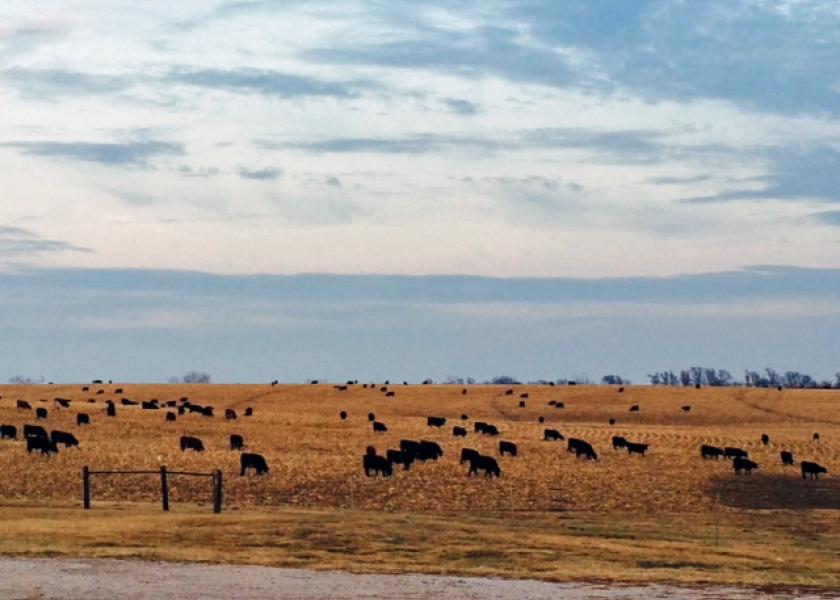Cornstalks to Get the Call-up

It could be time to take corn stalks off the bench and into your starting lineup.
By: Travis Meteer, University of Illinois Extension
When a player gets injured and goes on the DL, the manager calls up a player from the minors. This year your hay crop likely got injured. So as the manager, you need to call-up the reserves… cornstalks. As an analyst (nutritionist), cornstalks will serve as a worthy replacement. But, don't expect cornstalks to make the all-star team. Cornstalks, when used in a balanced ration, will work well. However, if you are planning on cornstalks solving all your problems alone… you will have a losing record.
The best way to utilize cornstalks is to graze them. Cattle graze selectively, looking for the more palatable feedstuffs. The more palatable parts of the plant are also more nutritious. Cattle first eat the remaining corn grain, then husks, then leaves, and finally the stalk.
Cattle will eat the more digestible and higher protein portions first. Therefore, a good mineral is probably the only supplementation needed for the first month unless the herd includes fall-calving cows or stocker calves. For them, a supplement will be necessary to meet nutrient demands of lactation and growth, respectively
Using an equation developed at the University of Nebraska, a field that averages 150 bushels per acre yields 2,162 pounds of leaf and husk. Only 50 percent of the 2,162 pounds is available for the animal; the rest is trampled or lost in weathering. Thus, 1081 pounds of DM husk and leaf per acre are available as feed.
A 1300-pound cow consumes 884 pounds of DM per month. At 150 bushels an acre, approximately 1 acre of cornstalks are needed to feed the cow for 30 days. To feed the same cow on cornstalks for 60 days, 2 acres would be needed. Producers should scout fields for ear drop or down corn areas. A significant amount of grain loss in fields can cause acidosis or founder in animals. Fields with these areas will need careful management via strip grazing or completely fencing the problem areas out.
Many newer combines are equipped with mowers on the head to reduce residue build up. If you plan to graze the cornstalks it is recommended to turn the mowers off. Mowing reduces particle size and speeds up degradation of the cornstalk. Mowed residue will break down faster thus less will be available for animals after a few weeks.
Wet conditions this year have promoted foliar diseases in the corn crop. Plants that are affected by disease will break down more rapidly too. I suggest looking to healthy fields for the best cornstalk grazing or baling. Fields that had fungicide applied may be more suitable for grazing and baling this year.
If you do not have the capability to graze cornstalks, they can be baled. Baling cornstalks will add costs to the feed in the form of fuel, labor, equipment costs, and fertilizer replacement costs. Even with these costs, it can still be an economical feed. Hauling manure back to the harvested fields will displace some fertilizer costs associated with cornstalk removal.
Fertilizer value is at times hard to determine for residue removal. Generally, fertilizer value of a 1200-pound round bale of cornstalks is around $15. Remember harvesting costs such as fuel, labor, transportation, and equipment wear are all real costs to evaluate.
As an aside, straw will be in short supply this year and is currently bringing good money. If you need bedding you should consider baling cornstalks. It will be more cost effective than buying straw.
All in all, utilize cornstalks to fill your forage gap and for bedding needs. Just like poor hay, baled cornstalks will need supplemented. Grazing cornstalks is a no-brainer. Use clean, healthy fields for the best results. Cornstalks can be great alternative forage, but don't expect your substitute forage to be your best player.







